6 Furnace Issue Warning Signs to Watch Out For
Posted on by WestAIR Heating & Cooling
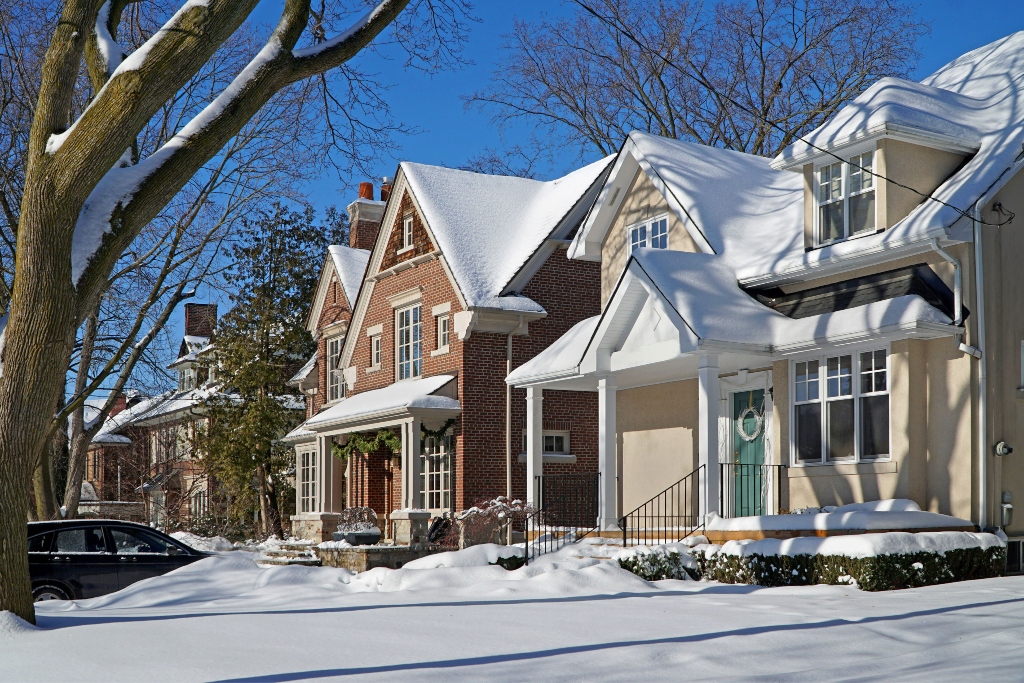
November may have given us a few warm, sunny days, but it’s safe to say heating season is upon us in Minnesota. We’ll have our furnaces working hard for the next few months, making it crucial for homeowners to know when their system needs professional repair or replacement. Use these furnace issue warning signs so you know when it’s time to call in the pros this winter.
Old Age
With proper installation and regular maintenance service, furnaces will last 15 to 20 years on average. Check the age of your furnace, and if it’s over 15 years old, it’s time to start considering an upgrade. Contact WestAIR for a free estimate and to schedule a professional inspection and evaluation with one of our HVAC technicians.
Frequent, Costly Repairs
Your furnace should be serviced annually for maintenance, but regular repairs that take a toll on your wallet are a sure sign that your furnace needs replacing. If repair service costs 50 percent or more than a replacement, a system upgrade is highly recommended. Not only will you receive peace of mind throughout the heating season, modern furnaces offer much higher efficiency and performance, saving you money on utility and repair bills.
Irregular Sounds, Smells, and Cycling
HVAC systems operate quietly and can easily go unnoticed if they’re functioning properly. Keep an eye (as well as an ear and nose) out for these irregular warning signs:
- Banging, rattling, popping, humming, or screeching sounds
- Persistent or random burning smells
- More frequent on/off cycling (AKA short cycling)
These complications indicate serious mechanical problems that decrease heating efficiency and pose a potential fire hazard. Contact WestAIR, your local HVAC company, ASAP if you notice any of these issues.
Uneven or Inefficient Heating
Properly sized, installed, and maintained furnaces are designed to heat your entire house evenly. Signs of inefficient heating include:
- Finding cold spots or different temperatures in rooms around the home
- Having to adjust the thermostat frequently to maintain comfort
- Turning the temperature higher than normal to keep the house warm
- Seeing unexpected spikes in utility bills
If you experience any of these issues, the solution could be anything from a simple repair to a thermostat or furnace replacement. Don’t suffer through poor heating and higher costs – have an HVAC technician inspect your system and diagnose the problem and discuss your options.
Decreased Indoor Air Quality
Furnaces and HVAC systems are designed to help maintain indoor air quality and humidity as well as temperature. Yours might be failing if you or your family notice the following:
- Stuffy or stale air
- Dry nose, throat, or skin
- Excessive dust accumulation
- Frequent static shocks
- Cracked wood on furniture, fixtures, and frames
- New or worsening allergy symptoms
Carbon Monoxide Exposure
Furnaces fueled by gas or oil produce carbon monoxide, which is poisonous and potentially life-threatening with prolonged exposure. Heating systems are designed to trap and safely exhaust this dangerous gas, but it is possible for a leak to develop over time and put your family at risk. Signs of a carbon monoxide leak include:
- Yellow and/or flickering burner flame (should be blue with a consistent burn)
- Soot around the furnace and registers
- Excess moisture on exterior windows, walls, and other cold surfaces
- Rust, cracks, or corrosion on/around flue pipes and other furnace components
Warning signs of carbon monoxide exposure can also mimic common illnesses, so beware of unexplained nausea, frequent headaches, confusion/disorientation, burning nose and eyes, and flu-like symptoms. Remember, carbon monoxide poisoning can cause serious health issues and even death. If you or a family member experience any of these signs and symptoms, seek medical attention immediately and then call your utility provider and HVAC technician ASAP.
We all know that Minnesota weather offers plenty of surprises, and getting stuck with a broken furnace is a surprise we could all do without. Remember these furnace issue warning signs so you can stay ahead of issues and know when it’s time for professional repair or replacement service.
WestAIR is a Rheem Pro Partner and proudly services all residential HVAC brands. Contact us for all your heating and cooling needs.
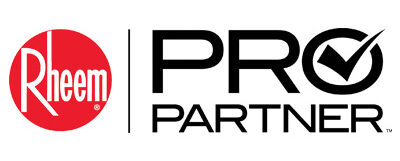
This entry was posted in Furnace,Health Tips,Heating,Repairs,Tips,Winter and tagged Furnace, Furnace Issue Warning Signs, Furnace Issues, Furnace Repair, Furnace replacement, Furnace Upgrade, Furnace Warning Signs, Heating, Heating Season, Heating System, High-Efficiency Furnace, Home Heating, Home Heating Safety, HVAC Safety, HVAC Warning Signs, Replace furnace, Residential Furnace, Residential HVAC, Rheem, Rheem Furnaces, Rheem Pro Partner, WestAIR furnace replacement
7 Tips for Winter Indoor Air Quality Maintenance
Posted on by WestAIR Heating & Cooling
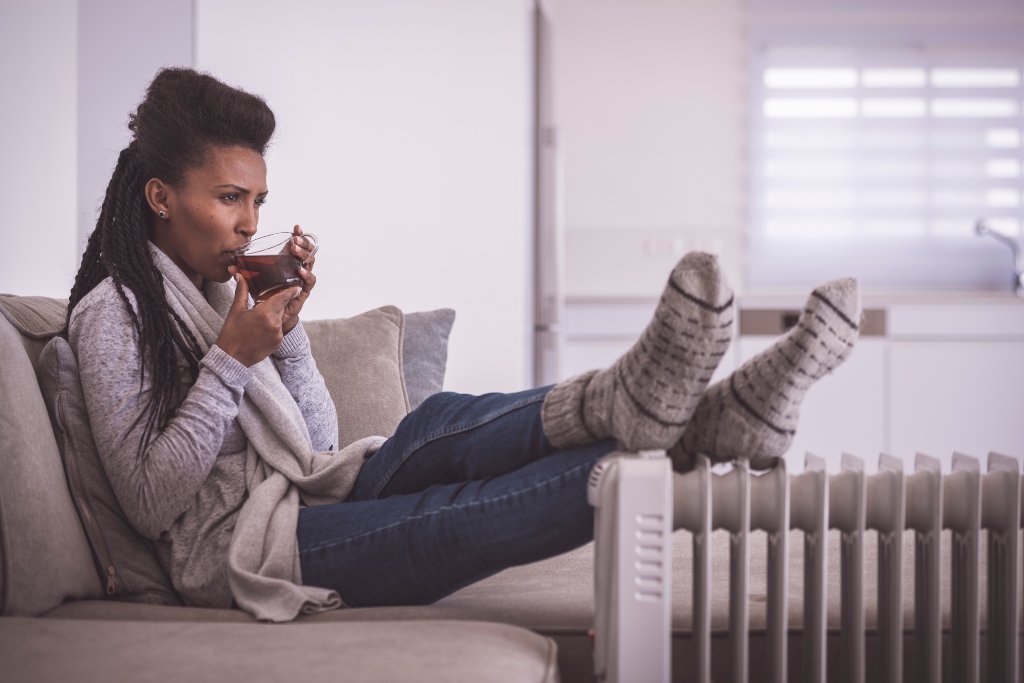
With the recent snowfall and chilly temps, there’s no denying that winter is almost here. Time to prepare! As heating season makes its way to Minnesota, we must remember to keep the air in our home clean as well as warm. Use this guide to winter indoor air quality maintenance to keep your family cozy, healthy, and happy throughout the season.
Poor Winter Indoor Air Quality: Causes and Effects
When cold weather hits, we seal our homes to prevent the warm air produced by our furnaces from escaping. While this helps increase comfort and energy efficiency, it also traps dust, pollen, and other airborne contaminants inside the home that then decrease indoor air quality. Common signs of poor winter indoor air quality include:
- Dry, itchy, or watery eyes
- Cold or flu symptoms: coughing, sneezing, nausea
- Heightened symptoms of asthma and other respiratory illness
- Fatigue and trouble concentrating
- Irritation of the nose and throat, particularly dryness
- Headaches
Tips for Winter Indoor Air Quality Maintenance
Escaping the bitter cold of Minnesota winters means spending more time inside our home, making clean indoor air crucial to our comfort and health. Thankfully, homeowners can improve and maintain air quality with these helpful tips.
- Clean regularly – Don’t let dust, mold spores, and other pollutants build up around the home. Dust hard surfaces and vacuum (using a vacuum with a HEPA filter if possible) at least weekly. Use non-toxic cleaners free of volatile organic compounds (VOCs), which are a major contributor to unhealthy air.
- Maintain a clean filter – Air filters keep dust and other debris from entering and harming your HVAC system, but must be maintained in order to prevent these irritants from making their way back into the air. Remember to change air filters monthly or clean if resuable.
- Schedule annual service maintenance – Ensure your heating system runs at peak performance and provides clean, warm air with professional maintenance service from a WestAIR HVAC expert.
- Have your ductwork cleaned – Dirt, dust, pet hair and dander, and other irritants settle inside your air ducts over time. Schedule duct cleaning service before winter is in full swing, and plan to do so annually.
- Enhance ventilation with an air exchanger – Sealing the home in winter leads to recycled, stale air inside. To resolve this, air exchangers deliver a continuous flow of fresh, filtered outdoor air while simultaneously exhausting unhealthy indoor air.
- Control humidity with a whole house humidifier – Humidity plays a crucial role for indoor air quality. Dry winter air can cause nose, throat, and skin discomfort, as well as damage wood fixtures and furniture over time. Installing a whole house humidifier will help maintain proper humidity levels in your home.
- Consider additional clean air solutions – Air cleaners work with your current system to remove excess dust and other irritants that decrease indoor air quality. Ultraviolet (UV) light purification systems utilize UV rays to eliminate odors harmful airborne pathogens like viruses, bacteria, mold, and VOCs.
This year has presented us all with new and unique challenges. But no matter how unpredictable 2020 has been, we know we can always plan for harsh winter weather here in Minnesota. We’re already seeing the temps drop and snow fall, so don’t wait! Use these winter indoor air quality maintenance tips to enjoy clean, comfy air inside your home this heating season.
For all your heating and cooling needs, trust the HVAC experts at WestAIR. Contact us today to learn more.
This entry was posted in Duct Cleaning,Furnace,Health Tips,Heating,Humidifier,Humidity,HVAC Maintenance,Indoor Air Quality,Tips,Winter and tagged Air cleaner, Air exchanger, Duct cleaning, Duct cleaning service, Heating, Heating Tips, Humidfier, Humidity, Humidity Management, HVAC tips, Indoor air quality, Indoor air quality solutions, Professional duct cleaning, Residential HVAC, Ventilation, WestAIR Heating & Cooling, Winter, Winter HVAC, Winter HVAC Tips, Winter Indoor Air Quality, Winter Indoor Air Quality Maintenance, Winter Tips, Winterize
Ready to Replace: The Benefits of a Furnace Upgrade
Posted on by WestAIR Heating & Cooling

How old is your furnace? According to Consumer Reports, a furnace’s average life expectancy is 15 – 20 years (depending on the fuel type). Age is just one indicator that it’s time to replace your heating system, and doing so can do more than just ensure a cozy home all winter. Read on to learn more about the benefits of a furnace upgrade.
Increased Energy Efficiency
Modern furnaces offer significantly more efficiency than older ones, which ultimately means lower utility bills. This is measured by the system’s annual fuel utilization efficiency (AFUE) – the amount of the system’s annual energy consumption that actually produces heat. Older systems score between 56 percent and 70 percent AFUE, meaning only 56 to 70 percent of the energy consumed becomes heat for the home. Modern high-efficiency heating systems offer 90 percent to 98.5 percent AFUE, helping you use less and save more.
Compatible with Programmable Thermostat – More Savings
Programmable thermostats can save you up to 33 percent on annual heating and cooling costs. You can schedule temperatures ahead of time, so the system automatically turns down when you’re away to save energy and back up when you’re at home for comfort. Properly used along with your new energy-efficient furnace, a programmable thermostat can help you maximize your savings.
Optimal Comfort Throughout the Home
Advanced technology in today’s furnaces helps provide stable, even temperatures throughout the home, eliminating cold spots and ensuring comfort.
Some modern features and benefits:
- Zoning systems let you regulate the temperatures in each individual room, making sure the heat is utilized how you want.
- Variable-speed operation means the blower motor has multiple speed settings. It will work at high capacity during periods of extreme cold to circulate more warm air throughout the house, and low capacity on more mild days to use less energy. Older systems have fixed-speed motors that operate at full capacity whenever they run.
- Two-stage furnaces will operate in the first stage (about 65 percent of full capacity) until outside temperatures drop low enough, in which case it will kick into stage two and produce more heat to fulfill the additional requirements. As a result, these systems enhance efficiency and provide a steady flow of warm air for comfort on those extra-cold days.
Improved Safety
Due to normal wear and tear over time, an older furnace can develop a crack in its heat exchanger and leak poisonous carbon monoxide (CO) into the home. Common signs of a CO leak include:
- Weak, flickering, and/or yellow burner flame
- Soot streaks near furnace
- Moisture on windows, walls, or other cold surfaces
- Rusting on flue pipes/other pipe connections or appliance jacks
- Small water leak at base of chimney, vent, or flue pipe
Signs of human exposure can be mistaken for common illnesses:
- Flu-like symptoms
- Headaches
- Nausea
- Disorientation
- Burning feeling in nose/eyes
If you notice any of these signs of CO poisoning, contact your local HVAC specialist immediately. Installing a new furnace will help keep your home feeling cozy through the winter without putting your family in danger.
Better Indoor Air Quality
Your HVAC system is also responsible for the air quality of your home, and keeping a clean air filter is key. However, even with a clean filter, an older furnace can cause excessive dust, allergens, and dry, stale air in your home.
Enhanced Reliability
Frequent issues and expensive repairs to your furnace add up quickly, and they also leave your home with insufficient or no heat until fixed. While you should have your system serviced annually, having to call for a repair shouldn’t be a regular occurrence. A new furnace gives you the peace of mind that your family will be comfy all winter long.
While important, keeping your home warm is only one of the benefits of a furnace upgrade. We rely on our home’s heating system a lot here in Minnesota, so it’s important to make sure yours is up to the task. Don’t wait until it’s too late! Have your system inspected today and see if this is the year you replace.
WestAIR installs high-efficiency Rheem furnaces because they use advanced, state-of-the-art technology to offer the best in energy-efficient home heating. From HVAC service to system replacements, our experts are here for all your heating and cooling needs.Contact us for more information.
This entry was posted in Furnace,Heating,Indoor Air Quality,Tips,Winter and tagged Benefits of a Furnace Upgrade, Energy efficiency, Furnace replacement, Furnace replacement from Rheem, Furnace Upgrade, Heating, Heating System, Heating System Upgrade, High-Efficiency Furnace, Home Heating, HVAC Upgrade, Indoor air quality, Rheem Furnaces, Rheem Pro Partner, WestAIR furnace replacement, Winter
Winter Energy-Saving Tips
Posted on by WestAIR Heating & Cooling
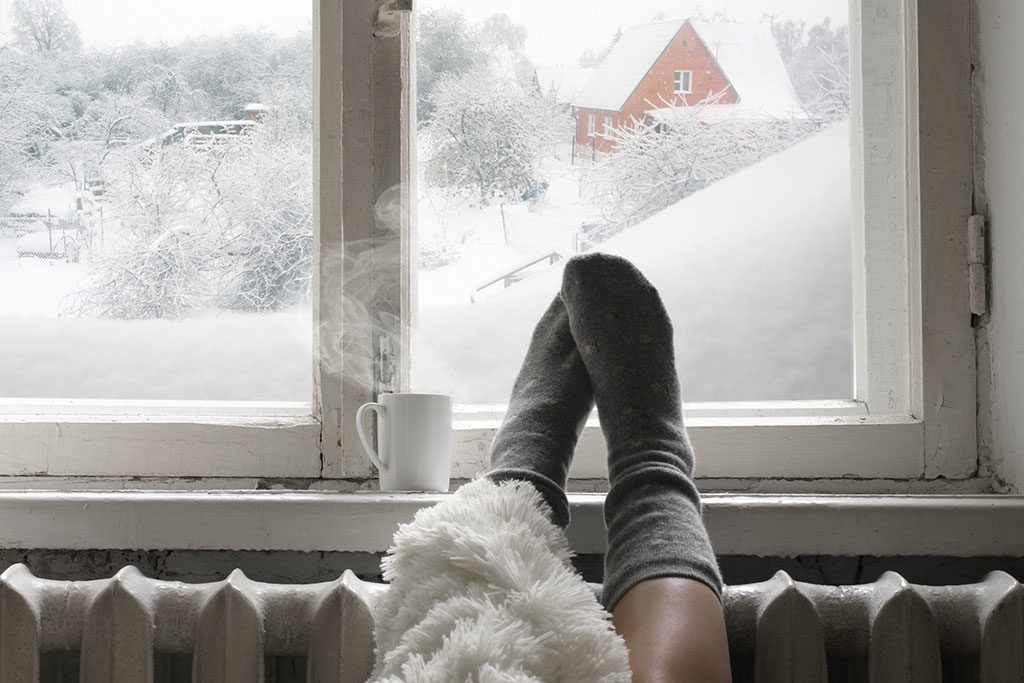
It’s the season of heavy snow, biting wind, and frosty windows. In the freezing temperatures, you may notice your energy bills spike as you try to heat your home. WestAIR is here to help. Follow our winter energy-saving tips to keep cozy:
- Insulate your windows with heavy curtains. Keep the curtains closed at night and open in the day for free solar heating.
- If the warmth in your home sneaks away the moment the furnace cycles off, you may be losing heat through drafty windows. Use caulk, weather stripping, or draft stoppers to seal leaks around doors and windows.
- Seal air leaks in plumbing penetrations, gaps around the chimney, recessed lights, and unfinished spaces behind cupboards and closets. Insulate the attic or crawl space and other areas of the home according to recommendations for your region.
- Reverse ceiling fans so they run clockwise. Hot air rises, so the fans will push the warm air back down to you. Running them in the winter can save up to ten percent in energy costs.
- Move furniture and other items away from vents so the heat can travel from the ductwork to your rooms.
- If you have a wood-burning fireplace, keep the damper closed when it’s not in use so the warm air doesn’t escape out the chimney.
- Change filters. Dirty, clogged filters make your heating system work harder, which puts stress on your equipment and increases energy bills.
- Avoid using exhaust fans, which will suck out the warm air.
- Recycle oven heat. When you finish baking something and turn the oven off, leave the door open to warm the kitchen.
- Install a whole house humidifier to combat the dry air. Relative humidity makes your home feel warmer at lower temperatures, so you can turn the thermostat down and still feel comfortable.
- Turn the thermostat down when you sleep and when you leave, but no more than five degrees. Your furnace may spend more energy starting up again than it does keeping the home within a steady temperature range.
- Invest in a programmable thermostat, so it can adjust the temperatures for you. According to Minnesota Energy Resources, you could save up to $180 dollars a year just by upgrading this simple accessory.
- Don’t heat unnecessary spaces. Learn how you can control where the heat goes in your home with automatic zoning.
- Schedule service for your heating system.
WestAIR is committed to keeping your home warm this winter. We understand the stress that Minnesota winters place on your heating system and pocketbook. Check out our Heating 101 guide for more seasonal HVAC tips.
Contact us for more information.
This entry was posted in Energy Savings,Heating,Tips and tagged Automatic zoning, Energy efficiency, Energy-saving tips, Heating, Heating 101, HVAC, HVAC tips, Indoor air quality, Save money, Seasonal hvac tips, Thermostat, Whole house humidifier, Winter
Dry Indoor Air + Humidification
Posted on by WestAIR Heating & Cooling
 Winter is already uncomfortable enough with the freezing temperatures, so why not make the most of your cozy indoor living space where you can escape the dry and brittle cold air? Lower temperatures mean lower humidity levels because cold air can’t hold as much moisture as warm air. Here are two simple reasons your dry indoor air needs humidification:
Winter is already uncomfortable enough with the freezing temperatures, so why not make the most of your cozy indoor living space where you can escape the dry and brittle cold air? Lower temperatures mean lower humidity levels because cold air can’t hold as much moisture as warm air. Here are two simple reasons your dry indoor air needs humidification:
Your comfort
Overly dry air can make your skin and respiratory problems flare up, from asthma and allergies to eczema and acne. If your home air is too dry, it could cause bloody noses, chapped lips, and itchy skin. Your respiratory system is lined with moist membranes in your nose and throat that prevent bacteria, viruses, dirt, and dust from getting into your lungs. If they are dry, they won’t keep particles out effectively, making you more vulnerable to sickness.
In addition, dry air increases static electricity, which produces painful shocks and zaps when you walk around on the carpet or touch metal surfaces. It will also make your hair more difficult to maintain and cause your clothes to stick to you uncomfortably.
Your belongings
Dry air will pull moisture from hardwood floors, furniture, and even the walls, doors, and general frame of your home, making it contract and shift. As the frame shifts, doors may be hard to open and close, or gaps may form between the ceiling, walls, windows, and door frames.
Books, artwork, and even the paint or wallpaper on your walls can get brittle, warped, or wrinkled in dry air. If you have musical instruments, they may lose their shape and tune. Humid air feels warmer, so moderate levels of humidity can allow you to set the thermostat lower and give your heating system a break. That way, you can live comfortably and save money on your heating bill and maintenance. But be careful: excess moisture may cause mold, bacteria, and mildew growth in poorly ventilated areas of your home.
You can keep an ideal, comfortable humidity level between 40 and 60 percent with a whole home humidifier. WestAIR Heating & Cooling offers whole house humidifiers that will keep every room of your home comfortable, even in the dry winter. Our humidifiers will automatically work with your HVAC system to distribute moisture throughout your home’s entire duct system. We offer programmable thermostats that come with a built-in humidity sensor so you can test and regulate home humidity and avoid going overboard.
Contact us to learn more about your heating and indoor air quality options.
This entry was posted in Energy Savings,Furnace,Health Tips,Heating,Humidifier,Indoor Air Quality,Tips,Winter and tagged Dry air, Heating, HVAC tips, Indoor air quality, Whole house humidifier
Carbon Monoxide Awareness
Posted on by WestAIR Heating & Cooling
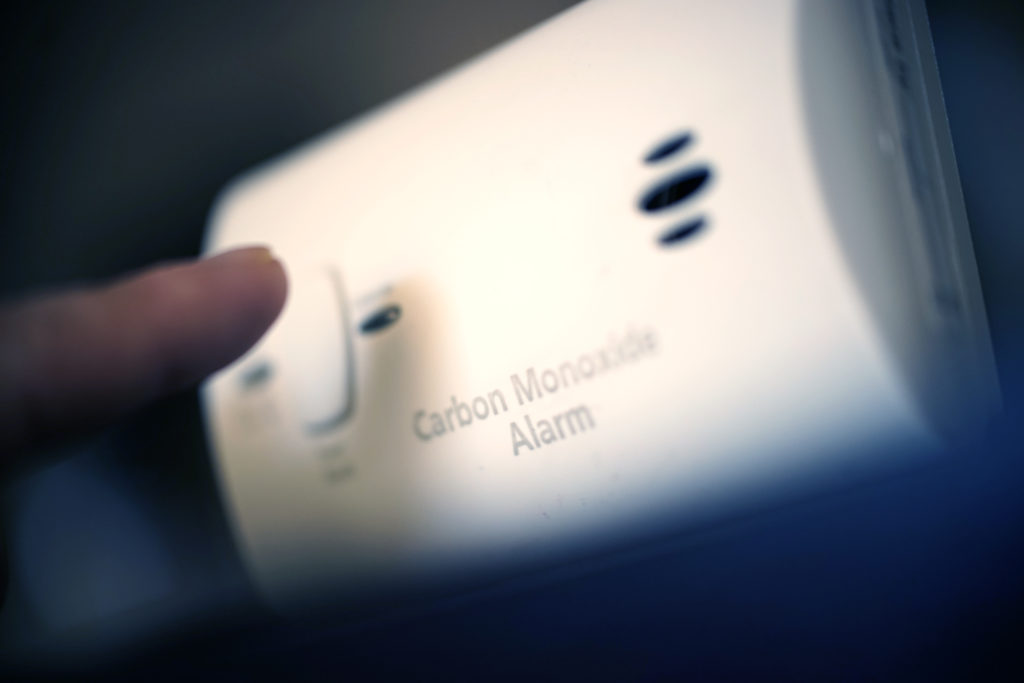 Carbon monoxide (CO) is an invisible, odorless, and tasteless gas, making it difficult to know when you’ve been exposed. Known as the silent killer, carbon monoxide poisoning is the most common fatal pollutant in many countries. As the weather turns cooler and we turn on our heating systems, it’s important to increase your awareness and take extra precautions.
Carbon monoxide (CO) is an invisible, odorless, and tasteless gas, making it difficult to know when you’ve been exposed. Known as the silent killer, carbon monoxide poisoning is the most common fatal pollutant in many countries. As the weather turns cooler and we turn on our heating systems, it’s important to increase your awareness and take extra precautions.
What Causes Carbon Monoxide Poisoning?
Burning fossil fuels produce carbon monoxide when oxygen levels are too low to create carbon dioxide. Gas, oil, wood, and coal burning appliances like boilers, central heating systems, water heaters, dryers, and generators are all sources of CO. Smoking cigarettes increases CO levels by 10-40 parts per million. Inhaling fumes from paint thinners and products containing methylene chloride, especially in poorly ventilated areas, causes carbon monoxide to metabolize in the bloodstream. Cars running in a closed garage can produce a deadly amount of carbon monoxide in only ten minutes! Some factory and industrial workers have exposure to carbon monoxide as well.
Carbon Monoxide Levels at Parts Per Million
The concentration of carbon monoxide is measured in parts per million (PPM), and effects from exposure vary.
- 0 PPM – Fresh air.
- 10-24 PPM — Possible long-term exposure risk.
- 35 PPM — OSHA standard for maximum exposure during an 8-hour work day.
- 100 PPM — Causes headaches after 1-2 hours.
- 200 PPM — Causes dizziness, nausea, fatigue.
- 400 PPM — Life-threatening after 3 hours of exposure.
- 800 PPM — Death within 2-3 hours of exposure.
- 1600 PPM — Death within 1-2 hours of exposure.
Symptoms
Inhaling CO turns your hemoglobin into carboxyhemoglobin, which prevents your blood from absorbing oxygen. Be aware of the symptoms of carbon monoxide poisoning in case you are in an area without a working alarm.
- Dizziness
- Headache
- Confusion
- Disorientation
- Nausea
- Blurred Vision
- Memory loss
- Loss of consciousness
Risks from CO Exposure
Anyone can be at risk of carbon monoxide poisoning. Prolonged exposure to CO can lead to seizures, coma, and death. Treatment requires administering 100 percent oxygen, and risk of death reduces as the oxygen brings the HbCO count down to less than 10 percent. Carbon monoxide poisoning is considered an anoxic brain injury, causing long-term neurological problems like memory loss, confusion, and poor coordination.
To prevent carbon monoxide poisoning, install at least one carbon monoxide detector on each level of your home. Check and replace your batteries twice a year and upgrade your alarm every five years. Schedule annual maintenance on any gas, oil, or coal appliances. Don’t use grills or generators indoors and keep your home and garage properly ventilated.
Contact us to learn more about the safety of your heating or ventilation equipment and to schedule your annual maintenance.
This entry was posted in Garage,Health Tips,Heating,Tips and tagged Carbon monoxide, Carbon monoxide poisoning, CO, Fossil fuels, Gas, Heating, HVAC, Poison
Are Radiant Infloor Heating Systems Worth the Cost?
Posted on by WestAIR Heating & Cooling
Have you ever been to a home or building with heated floors? Even on a chilly winter evening, your feet feel warm. The air around you feels comfortable, not drafty. Some homeowners find heated floors a necessity, while others think they’re an expensive and frivolous feature. Let’s consider the pros and cons of radiant infloor heating.
Advantages
Energy Efficiency
Traditional boiler and forced air systems heat the nearest area of space. The radiator can have an internal temperature between 159-167 degrees Fahrenheit just to heat up a room. By the time the warm air makes its way to the other side of the room, the air cools below the programmed temperature. Depending on the location and size of the room, a radiator or forced air can create inconsistent temperatures.
Infloor heating covers the entire floor. Heat rises, so no matter where you walk, the room will reflect the correct temperature. Furthermore, the source typically heats up between 80 – 90 degrees. Best of all, radiant heat can save 15 to 40 percent on energy bills because of its efficient technology.
Minimal Maintenance
Did you know you should have your furnace checked once a year, as well as change your air filter multiple times a year? Service visits costs add up, especially if your heating system needs replacement parts. There are no maintenance costs with radiant infloor heating, and some brands guarantee their product for decades!
Space
Boiler systems and forced air take up space. Boiler radiators reduce physical space in a room and can create challenges with furniture placement. Forced air systems make use of ceiling, wall, and floor space for ducts and vents. With infloor heating, the flooring conceals all equipment, allowing for an open, spacious feel.
Comfort
We all have experienced the shocking feeling of bare feet on a cold floor during the winter. With radiant infloor heating, your feet will feel cozy all winter long, even without socks.
Versatility
Infloor heating works with all floor types: wood, stone, tile, carpet, laminate, and more.
Safety
Radiators can pose safety hazards and cause injuries such as burns and cuts. In addition, forced air reduces oxygen and the thermal circulation kicks up dust, which can aggravate allergies, asthma, and other respiratory conditions. Radiant heat keeps air fresh and oxygen-rich and dust out of the air.
Disadvantages
Electric heating installation costs $10 to $20 per square foot. Connecting the system to your power supply adds an extra few hundred dollars to the bill. Another disadvantage—the process takes one to two days to dry, because of leveling compound that tops the thermal mat. Water-based systems cost more than double that of electric heating and require installation during the build phase of a new home. Lastly, radiant infloor heating adds about half an inch to the floor. Experts recommend using insulation boards underneath, increasing height by approximately an inch more.
Many homeowners say that the advantages of infloor heating outweigh the disadvantages, and the cost of installation is ultimately worth it. You don’t need to build a new home to try radiant infloor heating. If it’s time to remodel your bathroom or basement, look into infloor heating for added comfort, improved energy efficiency, and increased resale value.
Contact WestAIR Heating & Cooling to learn more about installing radiant infloor heating.
This entry was posted in Heating,Winter and tagged Floor heating, Radiant heating, Radiant infloor heating
What is Automatic Zoning?
Posted on by WestAIR Heating & Cooling
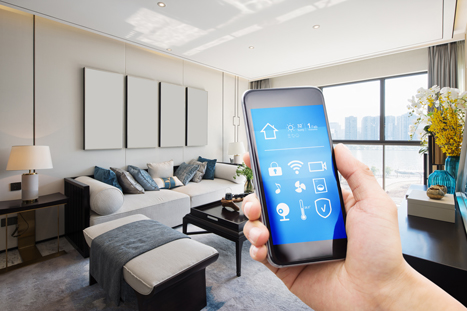 Artificial Intelligence. Self-Driving cars. Virtual Assistants. Every day, advancements in technology amaze and inspire us to automate and simplify our lives. So, what’s stopping you from getting smart with your HVAC system?
Artificial Intelligence. Self-Driving cars. Virtual Assistants. Every day, advancements in technology amaze and inspire us to automate and simplify our lives. So, what’s stopping you from getting smart with your HVAC system?
Home Automation
Automatic zoning or smart zoning, a category of smart home technology, allows you to control the temperature of each living space or zone in your home. Your bedroom or living room are primary zones that most people like to set to different temperatures. The issue? Older thermostats read the temperature in the middle of the home. Basements end up feeling cooler while second story rooms become warmer. Automatic zoning uses motorized dampers inside your ductwork that control the airflow to each zone. Select a zone and set a comfortable temperature using your smartphone or other device. The control panel in your HVAC system receives the information from your thermostat to adjust the dampers and temperature to your desired settings. It’s that simple!
New Technology
Zoning your HVAC system is not necessarily new technology but monitoring your setting from a device is. In the past, homeowners installed multiple thermostats or HVAC units to control these systems. Now you can regulate the temperature through one system in one location without ever touching a thermostat. If a room is not in use, automatic zoning reroutes the air to save energy. You can control all these settings with your phone, online, or right on the thermostat. Manufacturers create smart thermostats to sync with your Wi-Fi and easily customize to your lifestyle. Adjust your home’s temperature from anywhere!
Add-on Features
When you install automatic zoning, you can add more features to your heating and cooling system, too.
Fresh Air Intake
Bring fresh air into your home while using your heating or cooling unit.
Air Cleaner
Install an air cleaner to remove pollutants such as dust, pollen, and contaminants throughout the home.
Humidifier
Add a humidifier to make cold seasons more comfortable while preserving your home. Dry air cracks and warps the woodwork and building materials.
WestAIR can create a comfortable atmosphere for any room in your home. Save on energy bills by installing energy efficient automatic zoning. Contact us today to learn more.
This entry was posted in AC,Air Conditioning,Cooling,Furnace,Heating,Indoor Air Quality and tagged Air cleaner, Automatic zoning, Basement, Bedroom, Damper, Ductwork, Energy efficiency, Fresh air intake, Heating and cooling, Home automation, Humidifier, HVAC zoning, Living room, Smart home, Smart thermostat, Smart zoning, Thermostat
Extend the Life of your HVAC Equipment
Posted on by WestAIR Heating & Cooling
Having a working furnace and air conditioner is crucial during the winter and steamy summer days. Don’t run it and forget about it, as wear and tear is inevitable. You can save on costly replacements or repairs through proper maintenance. Extend the life of your HVAC equipment by following these steps.
Heating & Cooling Tips
1. Follow manufacturer instructions.
2. Have your systems checked every year by a qualified service technician. It’s best to schedule maintenance in the spring and fall. Technicians are busy in the hot and cold months, and you don’t want to wait until there’s something wrong.
3. Check your filters. Replace your filters every 30 to 60 days. If you have a permanent filter, clean it with mild detergent every 30 to 60 days. This is the most important step to increase the life of your equipment. Dirty filters make heating and cooling units work harder, which will shorten the life with use.
4. Keep your doors and windows closed. Your air conditioner and heater will work harder when there is more air to circulate. Make each space with ventilation smaller by closing your doors. This is the also the case for houses with boilers or window air conditioners. Rather than labor to regulate air temperature in the whole house, your a/c only needs to cool the individual room. With a boiler system, it’s efficient to close off rooms without a radiator.
5. Caulk and weather-strip air gaps on windows. This step is good for your wallet and your HVAC equipment. Old houses are especially drafty, so locate the air leaks by finding damaged glazing or old caulking. Another trick is to turn off all appliances and light an incense stick in each room. Turn on your exhaust vent if you have one. Then hold your incense stick close to windows, doors, and walls for a noticeable change in the smoke. If you have drafty doors, invest in some door draft blockers.
6. Use your thermostat. It’s a myth that you should keep your thermostat at a steady temperature. Most of the time, your furnace will be working harder to maintain the heat at a steady rate. Instead, program your thermostat for a comfortable temperature while you are home and ten degrees less while you are away. However, fidgeting with the thermostat will be less efficient, even if it seems harmless to put it up or down a degree or two. Keep it on a consistent schedule.
Energy Efficiency
Winter
1. Open window shades when windows are facing the sun. Let the sun warm your house naturally, putting less work on your furnace. The vitamin D is good for you this time of year!
2. Take advantage of using your oven. Slow cook your chicken and oven roast your veggies. The extra warmth will give your furnace a break. Your oven will be working two jobs at once without the added cost.
Summer
1. Close window shades facing the sun. Opposite of wintertime, you want to block the sun from adding extra heat to your house. Make sure to put your plants outside so they don’t suffer from the lack of sun!
2. Be smart with your other appliances. When you are doing laundry, hang up your clothes on a line to save energy or strain on your a/c. Why work an appliance that uses heat when it’s already hot outdoors? Washing clothing shouldn’t be an issue, though, if you stick to cold water. If it’s humid out, dry your clothes during the coolest part of the day: around dawn. Same goes for dishwashers.
3. Use your exhaust fans when cooking. Whether you plan on using the oven or stovetop for dinner, turn on the exhaust fan to let out the excess moisture and heat. Or maybe fix a cold sandwich or salad. In return, your air conditioner won’t have to work as hard! Same goes for your bathroom, but not everyone likes cold showers!
Annual Service Maintenance
Spring is around the corner, so it’s time to schedule your maintenance visit with WestAir Heating & Cooling.
Our technician’s maintenance list will take care of most things you cannot do yourself to ensure your equipment is running smoothly for summer and winter:
Annual Service Maintenance list:
• Clean furnace and check operation/filter
• Clean air conditioner and check operation
• Clean outdoor condenser and check refrigerant level
• Clean air exchanger filters and core
• Check radiant in-floor pressures and go over system
• Check humidifier filter and drain line
• Check unit heater operation
• Clean fireplace and check operation
Contact us for more information on heating, cooling, or our service maintenance!
This entry was posted in AC,Air Conditioning,Cooling,Furnace,Heating,Winter and tagged A/C, A/C, Air conditioner, Air filters, Air quality, Annual check-up, Caulk, Clogged filter, Cold air, Cooking, Cooling, Cost, Dirty, Dishwasher, Door draft stopper, Doors, Drafty windows, Dryer, Efficiency, Energy efficient, Exhaust fan, Fall, Filter, Filters, Furnace, Furnace filter, Heater, Heating, HVAC, Laundry, Maintenance, Quality, Save money, Shower, Spring, Summer, Sunshine, Sustainability, Thermostat, Windows, Winter
Why You Should Change Your Furnace Filter Often
Posted on by WestAIR Heating & Cooling
Changing your furnace filter seems to be an easily forgotten task. HVAC companies try their hardest to remind you to do these things, but do you know why you should change it more often than you think?
Maintenance
Getting an oil change for your car is as important as changing the furnace filter for your house. It simply extends the life of your equipment. A dirty filter means that less air is circulating, which then means that your furnace is working harder to keep your house warm. Over time, having a furnace go into overdrive for too long can overheat the system or break down the entire unit. This is not something you do want to deal with in subzero temperatures.
A little dirt can do a lot of damage. If your furnace filter is dirty, not only will it make your HVAC unit work harder, but it will also make your heating bills go up over time. All the extra effort that this heater is putting out digs a deeper hole into your wallet. While a new furnace filter might cost money, ignoring it will cost more in your gas bill, except you’re doing more damage than good by trying to be frugal.
Air Filter Quality
Skip the fancy furnace filters. A furnace filter is designed to protect your furnace, not improve indoor air quality. Some people swear by these special filters, but you’ll most likely have to run your furnace fan year-round to get the benefit of a high-efficiency filter. Extra work and extra care (replacing them often) will cost you more in the end.
There is a happy balance that you could achieve between cost and efficiency. For homeowners, we recommend purchasing a MERV 7 or 8 pleated filter, which traps 80 to 95 percent of air particles. If you are looking to get rid of pollutants and breathe cleaner air, consider getting an air cleaner instead.
When to call your HVAC technician
– Unit fails to turn back on
– Noisy or slow fan
– Bent fins
– Coils are extra dusty
Remember to change your furnace filter every month when fan is in use for heating and cooling seasons.
Got more furnace questions? Call us at (763) 498-8071.
This entry was posted in AC,Air Conditioning,Cooling,Energy Savings,Furnace,Heating,Indoor Air Quality,Tips and tagged Air filters, Air quality, Clogged filter, Cold air, Cost, Dirty, Efficiency, Filter, Filters, Furnace, Furnace filter, Heater, Heating, HVAC, Maintenance, Quality, Save money, Winter
Subscribe to Our Blog
With RSS feeds, you don't have to visit our site everyday to keep up to date. Simply subscribe to our blog via RSS or Email and our posts will come to you!
Search Blog Posts
Categories
Archives
- April 2024 (1)
- February 2024 (1)
- January 2024 (1)
- February 2023 (1)
- January 2023 (1)
- December 2022 (1)
- November 2022 (1)
- October 2022 (1)
- September 2022 (1)
- August 2022 (1)
- July 2022 (1)
- June 2022 (1)
- May 2022 (1)
- April 2022 (1)
- March 2022 (1)
- February 2022 (2)
- December 2021 (1)
- November 2021 (1)
- October 2021 (1)
- September 2021 (1)
- August 2021 (1)
- July 2021 (1)
- June 2021 (1)
- May 2021 (1)
- April 2021 (1)
- March 2021 (2)
- January 2021 (1)
- December 2020 (1)
- November 2020 (1)
- October 2020 (1)
- September 2020 (1)
- August 2020 (1)
- July 2020 (1)
- June 2020 (1)
- May 2020 (1)
- April 2020 (1)
- March 2020 (1)
- February 2020 (2)
- November 2019 (1)
- August 2019 (2)
- June 2019 (1)
- May 2019 (1)
- April 2019 (1)
- March 2019 (1)
- February 2019 (1)
- January 2019 (1)
- December 2018 (1)
- November 2018 (1)
- October 2018 (1)
- September 2018 (1)
- August 2018 (2)
- July 2018 (1)
- May 2018 (1)
- April 2018 (1)
- March 2018 (1)
- February 2018 (1)
- January 2018 (1)
- December 2017 (3)
- November 2017 (2)
- October 2017 (2)
- September 2017 (2)
- August 2017 (1)
- July 2017 (2)
- June 2017 (3)
- May 2017 (2)
- January 2017 (4)
- November 2016 (1)
- September 2016 (3)
- July 2016 (2)
- June 2016 (2)
- May 2016 (4)
- April 2016 (1)
- March 2016 (2)
- February 2016 (2)
- January 2016 (1)
- August 2015 (1)
- July 2015 (1)
- June 2015 (3)
- May 2015 (1)
- July 2014 (2)
- June 2014 (1)
- April 2014 (1)
- March 2014 (1)
- February 2014 (2)
- October 2013 (1)
- May 2013 (1)
- March 2013 (1)
- February 2013 (1)
- August 2012 (1)
- July 2012 (2)
- June 2012 (2)
- May 2012 (2)
- March 2012 (1)
- February 2012 (1)
- December 2011 (1)
- November 2011 (1)
- October 2011 (1)
- September 2011 (1)
- August 2011 (1)
- June 2011 (1)
- May 2011 (1)
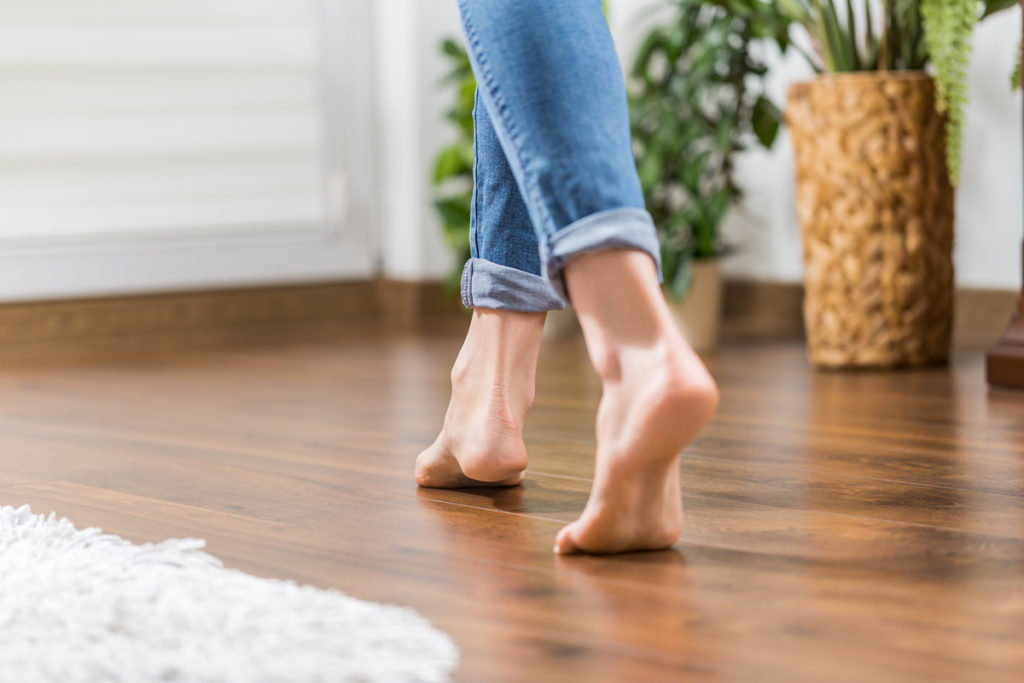
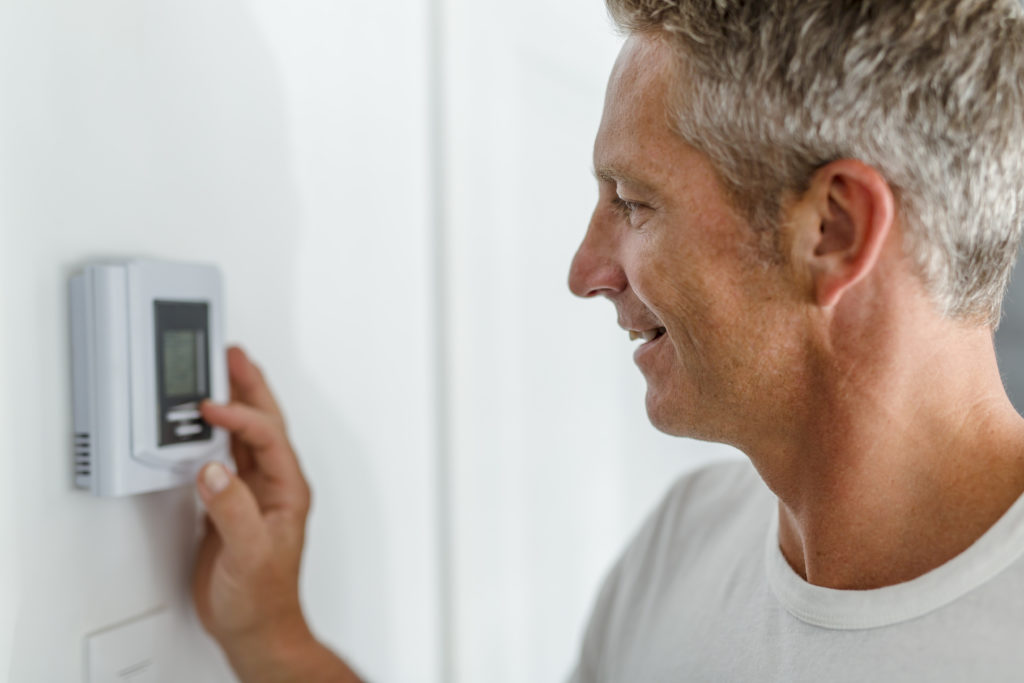
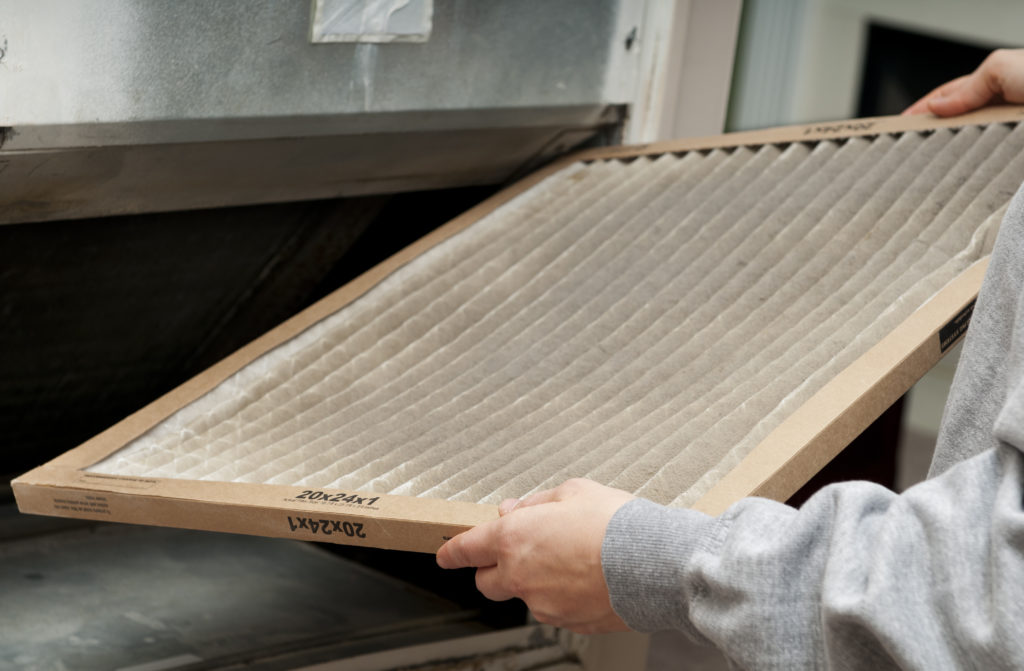
 Subscribe
Subscribe Subscribe
Subscribe